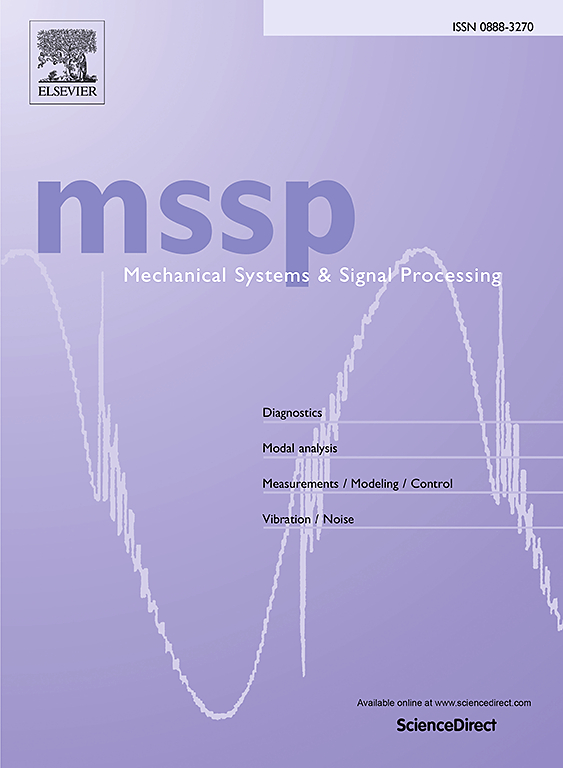Bayesian FFT modal identification for multi-setup experimental modal analysis
IF 7.9
1区 工程技术
Q1 ENGINEERING, MECHANICAL
引用次数: 0
Abstract
In full-scale forced vibration tests, the demand often arises to capture high-spatial-resolution and high-precision mode shapes with a limited number of sensors and shakers. Such detailed mode shapes are valuable for applications such as damage localization and high-dimensional finite element model updating. Multi-setup experimental modal analysis (EMA) addresses this challenge by roving sensors and shakers across multiple setups. To enable fast and accurate multi-setup EMA, this paper develops a Bayesian modal identification strategy by extending the existing single-setup algorithm. Specifically, a frequency-domain probabilistic model is first formulated using multiple sets of structural multiple-input, multiple-output (MIMO) vibration data. A constrained Laplace method is then employed for Bayesian posterior approximation, providing the maximum a posteriori estimate of modal parameters along with a posterior covariance matrix (PCM) for uncertainty quantification. Utilizing complex matrix calculus, analytical expressions are derived for parameter updates in the coordinate descent optimization, as well as for PCM computation, enhancing both coding simplicity and computational efficiency. The proposed algorithm is intensively validated with synthetic and field data from bridge and building structures. It demonstrates that the proposed method yields highly consistent results compared to scenarios with adequate test equipment. The resulting high-fidelity MIMO model enables structural response prediction under future loading conditions and supports condition assessment.
多装置实验模态分析的贝叶斯FFT模态识别
在全尺寸强迫振动测试中,通常需要用有限数量的传感器和激振器捕获高空间分辨率和高精度的模态振型。这种详细的模态振型对于损伤定位和高维有限元模型更新等应用非常有价值。多设置实验模态分析(EMA)通过在多个设置中移动传感器和激振器来解决这一挑战。为了实现快速准确的多组模态识别,本文通过扩展现有的单组模态识别算法,提出了一种贝叶斯模态识别策略。具体而言,首先使用多组结构多输入多输出(MIMO)振动数据建立了频域概率模型。然后采用约束拉普拉斯方法进行贝叶斯后验近似,提供模态参数的最大后验估计以及用于不确定性量化的后验协方差矩阵(PCM)。利用复矩阵演算,导出了坐标下降优化中参数更新和PCM计算的解析表达式,提高了编码的简单性和计算效率。该算法通过桥梁和建筑结构的综合数据和现场数据进行了大量验证。它表明,与具有足够测试设备的场景相比,所提出的方法产生高度一致的结果。由此产生的高保真MIMO模型可以在未来负载条件下预测结构响应,并支持状态评估。
本文章由计算机程序翻译,如有差异,请以英文原文为准。
求助全文
约1分钟内获得全文
求助全文
来源期刊

Mechanical Systems and Signal Processing
工程技术-工程:机械
CiteScore
14.80
自引率
13.10%
发文量
1183
审稿时长
5.4 months
期刊介绍:
Journal Name: Mechanical Systems and Signal Processing (MSSP)
Interdisciplinary Focus:
Mechanical, Aerospace, and Civil Engineering
Purpose:Reporting scientific advancements of the highest quality
Arising from new techniques in sensing, instrumentation, signal processing, modelling, and control of dynamic systems
 求助内容:
求助内容: 应助结果提醒方式:
应助结果提醒方式:


